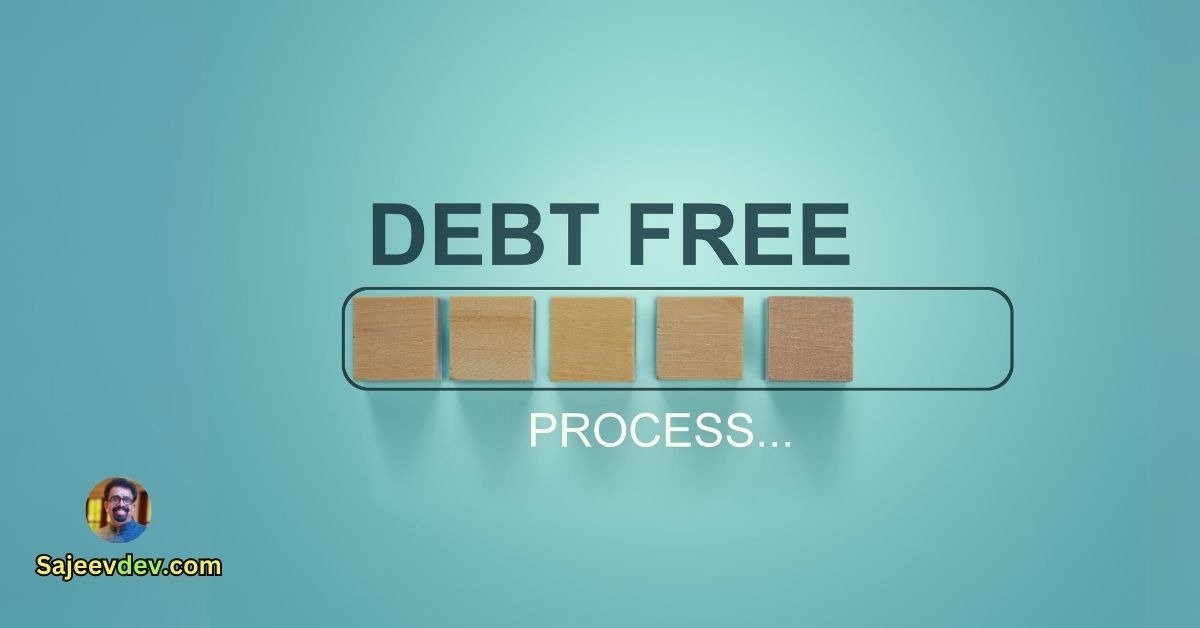When it comes to overcoming insurmountable debt, the first step is to face the reality of your financial situation head-on. It can be tempting to bury your head in the sand and ignore the mounting bills and creditors’ calls, but this will only make the situation worse. Take a deep breath, gather all your financial documents, and assess the damage.
Start by making a list of all your debts, including credit card balances, loans, and any other outstanding payments. Write down the total amount owed for each debt and the interest rates associated with them. This will give you a clear picture of the extent of your financial burden and help you prioritize which debts to tackle first.
Next, it’s time to create a budget. This may not be the most exciting task, but it is crucial for getting your finances back on track. Take a close look at your income and expenses and identify areas where you can cut back. Consider eliminating unnecessary expenses like eating out, subscription services, or cable TV. Every dollar saved can be put towards paying off your debts.
Once you have a budget in place, it’s time to develop a repayment plan. There are several strategies you can use, depending on your financial situation. One popular method is the snowball method, where you start by paying off the smallest debt first while making minimum payments on the rest. As you pay off each debt, you move on to the next one, creating a snowball effect that builds momentum and motivation.
be A CRYPTO MASTER now! Click Here To Know How>>>
Another approach is the avalanche method, where you focus on paying off the debt with the highest interest rate first. This method can save you money in the long run by reducing the amount of interest you pay over time. Whichever method you choose, the key is to stick to your plan and stay disciplined.
In addition to budgeting and repayment strategies, it’s essential to explore other options for debt relief. This could include negotiating with creditors for lower interest rates or payment plans, seeking the help of a credit counseling agency, or, in extreme cases, considering bankruptcy. Each option has its pros and cons, so it’s important to weigh them carefully and seek professional advice if needed.
Finally, don’t forget to take care of yourself during this challenging time. Overcoming debt can be a long and arduous journey, so it’s crucial to practice self-care and seek support from loved ones. Surround yourself with positive influences and celebrate small victories along the way.
Remember, overcoming insurmountable debt is possible. It may not be easy, but with determination, perseverance, and a solid plan, you can conquer that mountain of debt and regain control of your financial future.
Once you have faced the reality of your financial situation, it’s time to delve deeper into understanding the root causes of your financial challenges. Take a closer look at your spending habits and identify any patterns or behaviors that may be contributing to your current predicament. Are you overspending on non-essential items? Are you living beyond your means? Are there any recurring expenses that could be eliminated or reduced?
Examining your income sources is equally important. Are you maximizing your earning potential? Could you explore additional sources of income, such as freelancing or part-time work? Consider whether your current job aligns with your skills and interests, and if not, explore opportunities for career advancement or a change in profession.
Additionally, it’s crucial to assess your debt situation. Identify the types of debts you have, such as credit card debt, student loans, or medical bills. Determine the interest rates, outstanding balances, and minimum monthly payments for each debt. This information will help you prioritize your debt repayment strategy.
With a clear understanding of your financial landscape, you can begin to develop a realistic budget. Start by categorizing your expenses into essential and non-essential items. Essential expenses include housing, utilities, transportation, groceries, and debt repayments. Non-essential expenses encompass discretionary items like dining out, entertainment, and shopping. Look for areas where you can cut back and allocate more funds towards debt repayment or savings.
Creating a budget is not a one-time task; it requires ongoing monitoring and adjustments. Track your expenses regularly and compare them to your budgeted amounts. This will help you identify any areas where you may be overspending and allow you to make necessary adjustments to stay on track.
As you work towards regaining control of your finances, it’s crucial to stay motivated and focused on your goals. Celebrate small victories along the way, such as paying off a debt or sticking to your budget for a month. Surround yourself with a support system of friends or family members who can provide encouragement and accountability.
Remember, regaining control of your finances is a journey that requires patience and perseverance. By facing the reality of your financial situation, understanding the underlying causes, and developing a realistic budget, you are taking the necessary steps towards a brighter financial future.
Once you have prioritized your debts and explored your options for repayment, it’s important to create a detailed plan to tackle your financial situation. Begin by setting specific goals for each debt, such as paying off a certain amount each month or completely eliminating a particular debt by a certain date.
Next, take a close look at your monthly budget and identify areas where you can cut back on expenses. This might involve making sacrifices in certain areas, such as dining out less frequently or canceling unnecessary subscriptions. By reducing your expenses, you’ll have more money available to put towards your debt repayment plan.
It’s also crucial to establish an emergency fund as part of your plan. Unexpected expenses can arise at any time, and having a financial safety net can prevent you from falling further into debt. Aim to save at least three to six months’ worth of living expenses in an easily accessible account.
In addition to cutting back on expenses, consider finding ways to increase your income. This could involve taking on a side gig or freelancing, selling unused items, or asking for a raise at your current job. By boosting your income, you’ll have more funds available to accelerate your debt repayment.
As you implement your plan, it’s essential to track your progress regularly. Keep a record of your debt balances, payments made, and any changes in your financial situation. This will help you stay motivated and see the progress you’re making towards becoming debt-free.
Remember, creating a plan is just the first step. It’s important to stay committed and disciplined throughout the process. There may be setbacks along the way, but by staying focused on your goals and making consistent efforts, you can overcome your financial challenges and achieve financial freedom.
When it comes to tackling debt, the power of small steps cannot be overstated. Breaking down your repayment plan into smaller, more achievable goals is not only practical but also psychologically beneficial. By setting yourself weekly or monthly targets, you create a roadmap that guides you towards financial freedom.
Imagine you have a credit card debt that seems overwhelming. Instead of focusing on the total amount, you can set a goal to pay off a certain percentage of the balance each month. This approach allows you to track your progress and provides a sense of accomplishment with each payment made.
Similarly, if you have a loan, making extra payments whenever possible can significantly reduce the overall interest you pay over time. By setting a goal to make one extra payment per quarter or even per year, you are taking proactive steps to accelerate your debt repayment journey.
Sticking to your budget is another crucial aspect of managing debt. By setting a realistic budget for the week and consistently following it, you are taking control of your spending habits and making conscious choices about where your money goes. This not only helps you stay on track with your debt repayment plan but also cultivates a healthy financial mindset.
Celebrating each milestone along the way is vital for maintaining motivation and momentum. Whether it’s treating yourself to a small indulgence or simply acknowledging your progress, these celebrations serve as reminders of your determination and commitment to financial well-being.
Remember, the journey to debt freedom is not a sprint but a marathon. It requires patience, discipline, and perseverance. By breaking down your repayment plan into smaller, more achievable goals, you are setting yourself up for success. Every step forward, no matter how small, brings you closer to a debt-free future.
Real-Life Examples
Let’s take a look at some real-life examples of individuals who have successfully overcome insurmountable debt:
Sarah’s Story: Sarah found herself drowning in debt after losing her job during the pandemic. With a mountain of bills piling up and no steady income, she felt like there was no way out. But Sarah refused to give up. She took on freelance work, slashed her expenses to the bone, and reached out to her creditors to negotiate more manageable payment plans. It wasn’t easy, but over time, Sarah chipped away at her debt until she was finally debt-free.
David’s Journey: David had accumulated significant credit card debt over the years through reckless spending and poor financial decisions. But instead of wallowing in despair, David decided to take control of his situation. He enrolled in a debt management program, which helped him consolidate his debts and negotiate lower interest rates. With a strict budget in place, David committed himself to paying off his debt, one payment at a time. It took time and sacrifice, but eventually, David emerged victorious, free from the burden of debt.
Emily’s Triumph: Emily was a recent college graduate burdened with student loan debt. She had dreams of pursuing a career in a competitive field, but her debt seemed like an insurmountable obstacle. Determined to make her dreams a reality, Emily sought out every available resource to help her manage her debt. She researched and applied for loan forgiveness programs, took on side jobs to increase her income, and lived frugally to save as much money as possible. Through her perseverance and strategic planning, Emily was able to pay off her student loans ahead of schedule, proving that even the most overwhelming debt can be conquered.
The journey to financial freedom is not easy, nor is it quick. It requires discipline, sacrifice, and resilience. But it is a journey worth taking. By facing your debts head-on, creating a realistic plan of action, and celebrating every small victory along the way, you can overcome even the most insurmountable debt. Remember, you are not alone in this journey. There are resources, support systems, and success stories to inspire and guide you every step of the way. So take that first step today, and know that brighter days lie ahead.



